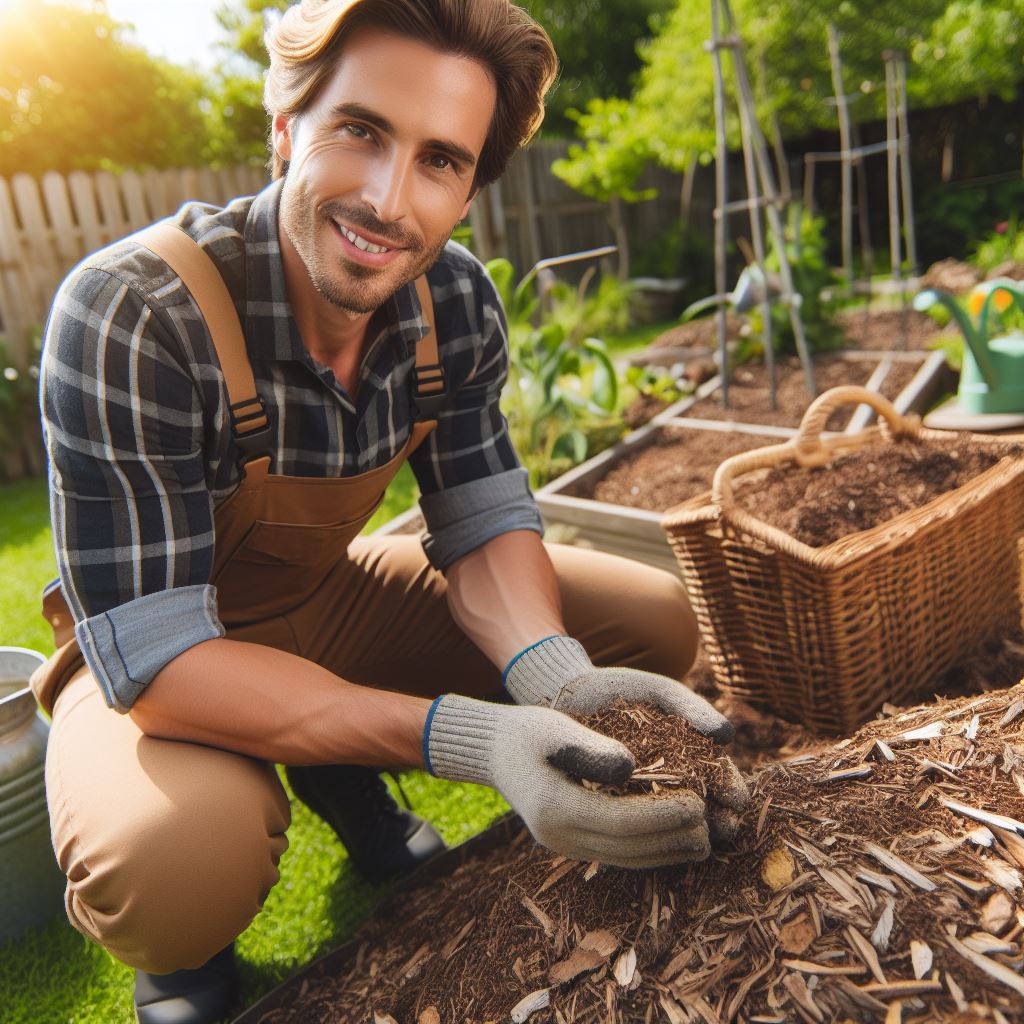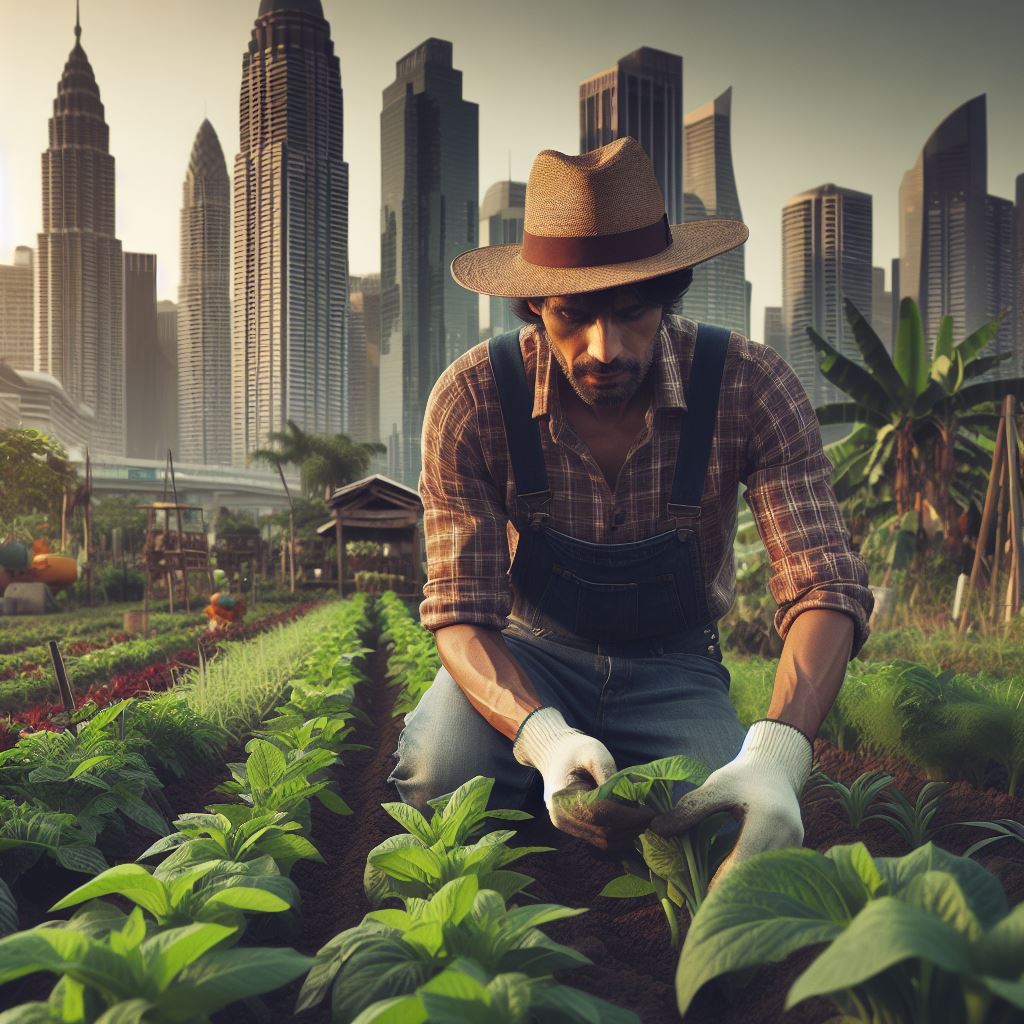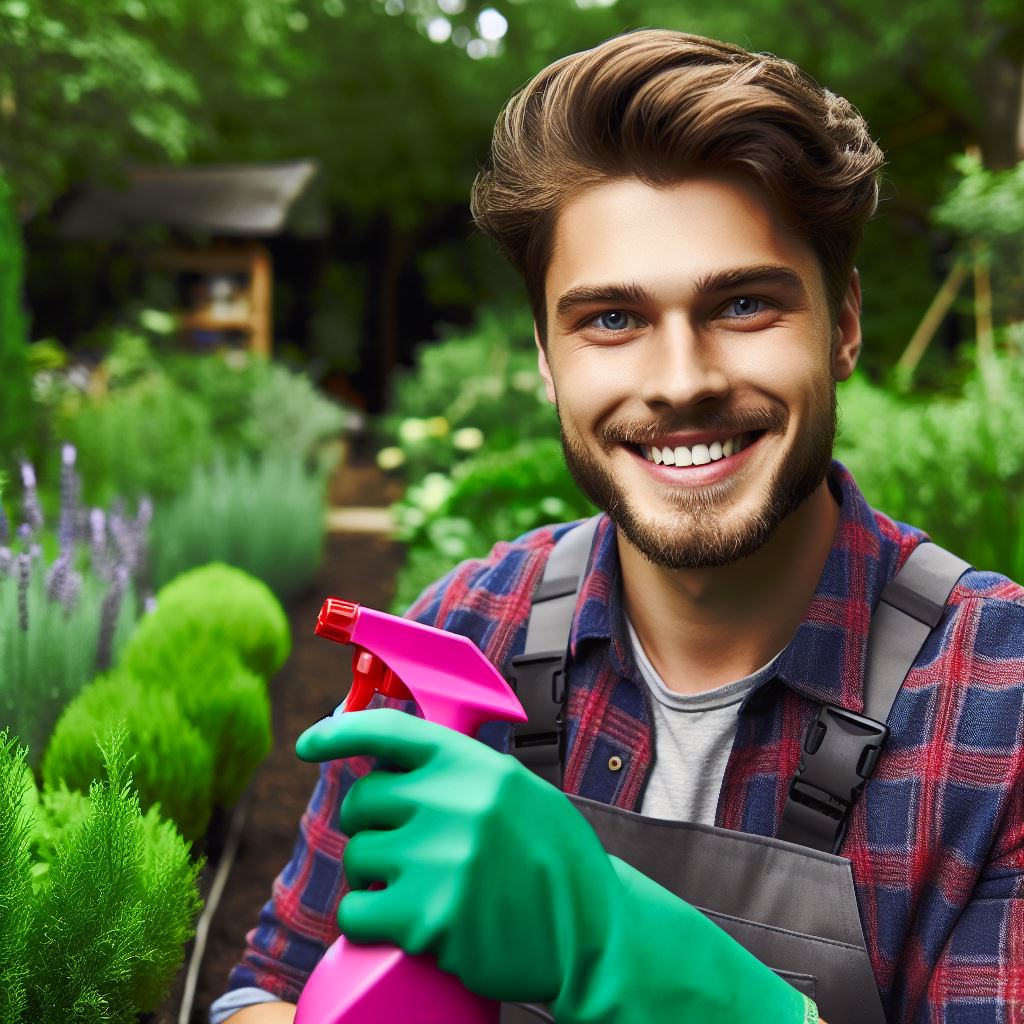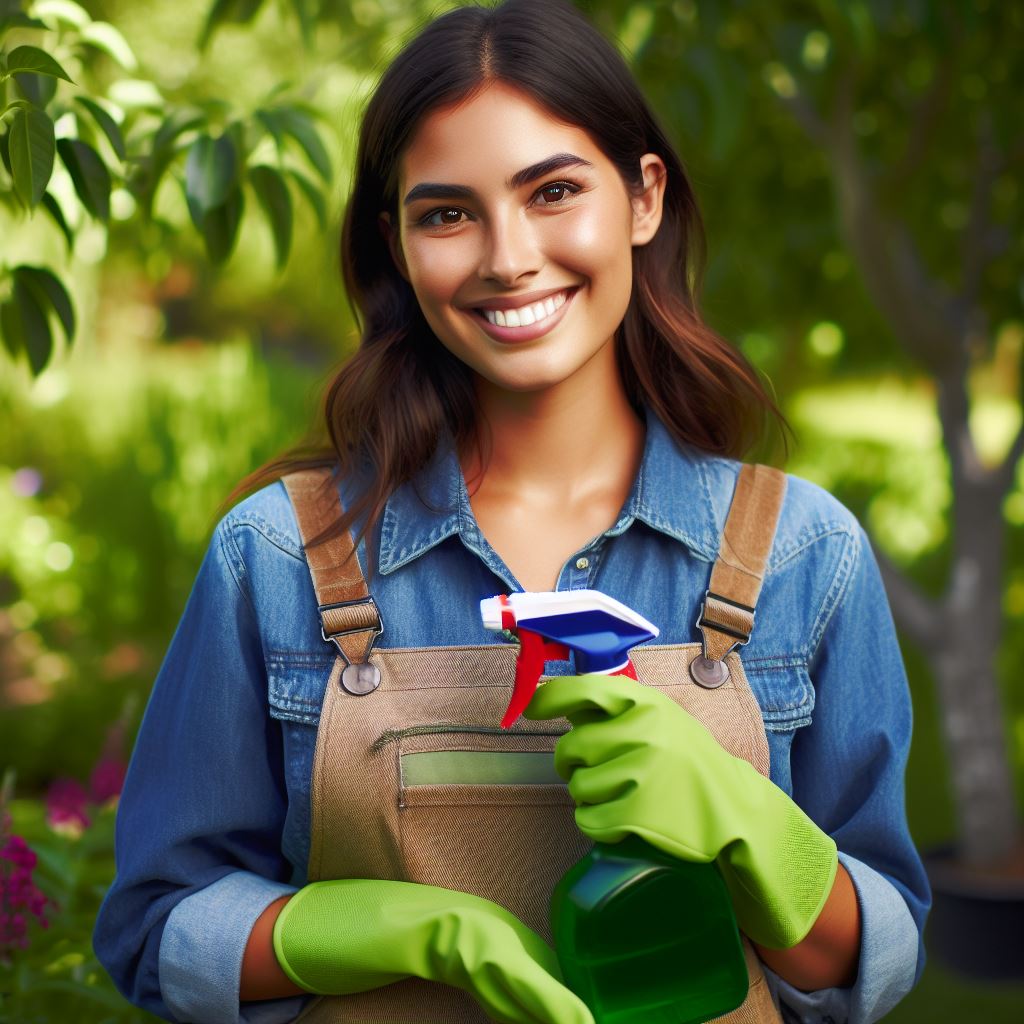Introduction
Container Gardening Water Smart Techniques encompass the practice of cultivating plants in containers as opposed to traditional ground planting methods.
It allows urban residents and small space farmers to cultivate edibles, herbs, flowers, and other plants on balconies, patios, rooftops, and anywhere space allows.
Container gardening’s versatility makes it wildly popular.
However, cultivating in containers poses unique challenges compared to in-ground gardening.
Container plants depend completely on growers for all inputs since their roots are restricted.
This makes them especially prone to drying out.
Providing adequate water is essential yet difficult to manage in small volumes of growing medium.
Using water-wise techniques is thus critical for healthy container plants that minimize water utilization.
This blog will provide tips on irrigation methods, moisture-retaining soils, water-savvy plant selection, rainwater harvesting, graywater recycling, mulches, self-watering designs, and more to equip container gardeners to use water sustainably.
Employing such strategies enables thriving container gardens that conserve precious water resources while beautifying urban spaces and producing bountiful harvests.
Selecting the Right Container
Choosing containers with appropriate drainage
- Make sure the container has drainage holes to prevent waterlogging and root rot.
- Containers with sufficient drainage allow excess water to escape, helping plants thrive.
- Check the bottom of the container for proper drainage and consider adding more holes if necessary.
Considering container material and size
- Choose containers made of porous materials like terracotta or wood, allowing better aeration.
- Non-porous materials like plastic or metal should be avoided as they retain excess moisture.
- Select containers that provide enough space for plant roots to grow and accommodate proper water retention.
Factors to consider when selecting containers for water-smart gardening
- Climate and weather conditions play a crucial role in container selection.
- Consider the location where the containers will be placed, such as sunny or shady areas.
- Think about the specific water requirements of the plants you intend to grow.
Now that we’ve discussed the importance of selecting the right containers for water-smart gardening, let’s delve deeper into each aspect.
Choosing containers with appropriate drainage:
Having proper drainage is essential to ensure the health and vitality of your container garden.
Without it, excess water can accumulate and suffocate the roots, causing them to rot and ultimately killing your plants.
To avoid this problem, always select containers with drainage holes.
When examining a potential container, turn it over and check the bottom. Look for existing drainage holes or areas where you can easily create them.
Transform Your Agribusiness
Unlock your farm's potential with expert advice tailored to your needs. Get actionable steps that drive real results.
Get StartedIf the container lacks sufficient drainage, you can use a drill or hammer and a nail to create holes.
Aim for about four to six holes, evenly spaced, to allow excess water to escape.
Considering container material and size
The material and size of your containers can greatly impact the success of your water-smart gardening efforts.
Porous materials such as terracotta or wood are excellent choices as they allow water to evaporate more effectively, preventing waterlogging.
On the other hand, non-porous materials like plastic or metal retain moisture, increasing the risk of overwatering.
Avoid containers made from these materials if possible, or consider adding extra drainage holes to prevent water buildup.
In terms of size, it’s crucial to select containers that provide adequate space for your plants’ root systems.
The roots need room to grow and absorb water efficiently. If the container is too small, the plants may become root-bound and suffer from stunted growth.
On the other hand, choosing containers that are too large may result in excess water retention, leading to root rot. Find a balance that suits your plants’ needs.
Factors to consider when selecting containers for water-smart gardening
Several factors should be taken into account when choosing containers for water-smart gardening.
Firstly, consider your climate and local weather conditions.
Some areas experience more rainfall, while others are prone to drought.
Select containers that can withstand these conditions and provide the necessary water management.
Additionally, examine the location where you plan to place your containers.
Some areas receive more sunlight, while others are shaded for a significant portion of the day.
Different plants have varying light requirements, so choose containers accordingly to ensure adequate water supply.
Lastly, think about the specific water needs of the plants you want to grow.
Some plants, like succulents or cacti, require less water and can thrive in containers with minimal drainage.
Others, such as leafy greens or flowering plants, may need more frequent watering.
By understanding your plants’ requirements, you can make informed decisions regarding container selection.
In general, selecting the right containers is crucial for water-smart gardening.
Choose containers with appropriate drainage, opt for porous materials, and consider the size based on your plants’ needs and your local climate.
By paying attention to these factors, you’ll set yourself up for success in creating a thriving container garden.
Read: Drip Irrigation: Small Farm Water-Saving Guide
Showcase Your Farming Business
Publish your professional farming services profile on our blog for a one-time fee of $200 and reach a dedicated audience of farmers and agribusiness owners.
Publish Your ProfileChoosing the Right Soil
Importance of soil in water retention
- Soil plays a crucial role in water retention for container gardening.
- It helps to hold moisture and prevent excessive water drainage.
- The right soil can make a significant difference in water-smart techniques.
Different soil types suitable for container gardening
Potting soil
- Potting soil is a popular choice for container gardening.
- It is specifically formulated to provide proper drainage and moisture control.
- Rich in organic matter, it retains water while allowing excess to drain.
Vermiculite
- Vermiculite is a mineral that absorbs and holds water.
- It increases soil’s ability to retain moisture in containers.
- Mixing vermiculite with potting soil improves water efficiency.
Coco coir
- Coco coir is made from coconut husks and is an environmentally friendly option.
- It has excellent water retention ability and promotes root growth.
- When combined with other soil types, it enhances moisture retention.
Peat moss
- Peat moss is a common soil amendment renowned for water retention.
- It has high water-holding capacity and improves soil structure.
- Mixing peat moss with potting soil helps to conserve water.
How to prepare soil for improved water efficiency
Choose a suitable container
- Select a container with adequate drainage holes to prevent waterlogging.
- Ensure it is the right size for the plant, providing enough room for root growth.
- Use a tray or saucer under the container to catch excess water and prevent wastage.
Amend the soil
- Mix potting soil with water-retaining additives like vermiculite or coco coir.
- Add organic matter such as compost to improve soil structure and water-holding capacity.
- This amended soil will create a favorable environment for water-smart container gardening.
Water deeply and less frequently
- Rather than shallow waterings, drench the soil thoroughly to encourage deep root growth.
- This allows the plants to access water stored in the lower soil layers.
- Water less frequently but adequately to prevent water runoff and evaporation.
Mulch the soil
- Apply a layer of organic mulch like straw or wood chips on the soil surface.
- Mulch helps to retain moisture by reducing evaporation and preventing weed growth.
- It also moderates soil temperature, keeping it cool during hot days and warmer during cold nights.
Use self-watering containers
- Self-watering containers have built-in reservoirs that provide water as needed.
- The plants can draw water through capillary action, reducing the risk of under or overwatering.
- These containers are especially beneficial for water-smart container gardening.
Essentially, choosing the right soil is essential for water-smart container gardening.
Potting soil, vermiculite, coco coir, and peat moss are suitable soil types that improve water efficiency.
By preparing the soil properly, using suitable containers, amending the soil, watering deeply but less frequently, mulching, and using self-watering containers, gardeners can ensure optimal water retention for healthy plants.
Read: Rainwater Harvest: A Boon for Urban Gardeners
Watering Techniques for Container Gardening
Importance of proper watering techniques
- Proper watering ensures healthy growth and development of plants in container gardens.
- It helps maintain the balance of moisture required by different plants.
- Adequate watering promotes nutrient uptake and prevents water stress in plants.
Watering according to plant needs and weather conditions
- Understand the water requirements of each plant species in your container garden.
- Different plants have different tolerance levels for moisture, so adjust watering accordingly.
- Consider the weather conditions and adjust watering frequency during hot, dry periods.
- Monitor soil moisture by sticking your finger an inch deep into the soil to check for dryness.
Irrigation systems suitable for container gardening
- Drip Irrigation: A highly efficient method that delivers water directly to the plant roots.
- Use a timer to automate the drip irrigation system, ensuring consistent watering intervals.
- This system reduces the risk of overwatering and minimizes water evaporation.
- Install emitters or micro sprinklers at strategic points to cover all the containers in your garden.
- Remember to adjust the water flow rate according to plant needs and weather conditions.
Self-Watering Containers: An innovative solution for water-smart container gardening
- Self-watering containers have a reservoir that holds excess water for plant uptake.
- These containers provide a constant supply of moisture, reducing the frequency of watering.
- They are especially useful when going on vacations or during busy periods.
- Check the reservoir regularly and refill it when necessary to ensure continuous water supply.
Mulching: A beneficial technique to conserve moisture in container gardens
- Apply a layer of organic mulch around the plants to retain soil moisture.
- Mulch helps to regulate soil temperature and reduce water evaporation from the surface.
- It also prevents weed growth, which competes for water and nutrients with your plants.
- Organic materials such as straw, wood chips, or shredded leaves make excellent mulch.
Proper watering techniques for specific plant types in containers
Seedlings and Newly Transplanted Plants
- Water seedlings gently to avoid dislodging them or damaging delicate young roots.
- After transplanting, water thoroughly to encourage root establishment.
Flowering Plants and Vegetables
- Water deeply at the base of the plants to ensure water reaches the roots effectively.
- Avoid wetting the foliage to reduce the risk of diseases like powdery mildew.
Succulents and Cacti
- Allow the soil to dry out between waterings to prevent root rot.
- Water sparingly and only when the top inch of soil feels completely dry.
Herbs and Fruits
- Most herbs and fruit plants prefer slightly drier conditions, so do not overwater.
- Water deeply but less frequently, allowing the soil to dry out partially between waterings.
Tips for efficient watering in container gardens
- Water in the morning to minimize water loss through evaporation during hot daytime temperatures.
- Use watering cans with narrow spouts to direct water at the base of the plants.
- Group containers with similar watering needs together to simplify the watering process.
- Always observe and adjust your watering regimen based on plant responses and weather changes.
In short, proper watering techniques play a crucial role in ensuring the success of container gardening.
By understanding plant needs, using suitable irrigation systems, and implementing efficient watering practices, you can achieve healthy growth and thriving plants in your container garden.
Read: Smart Watering: Techniques for Small-Scale Farms
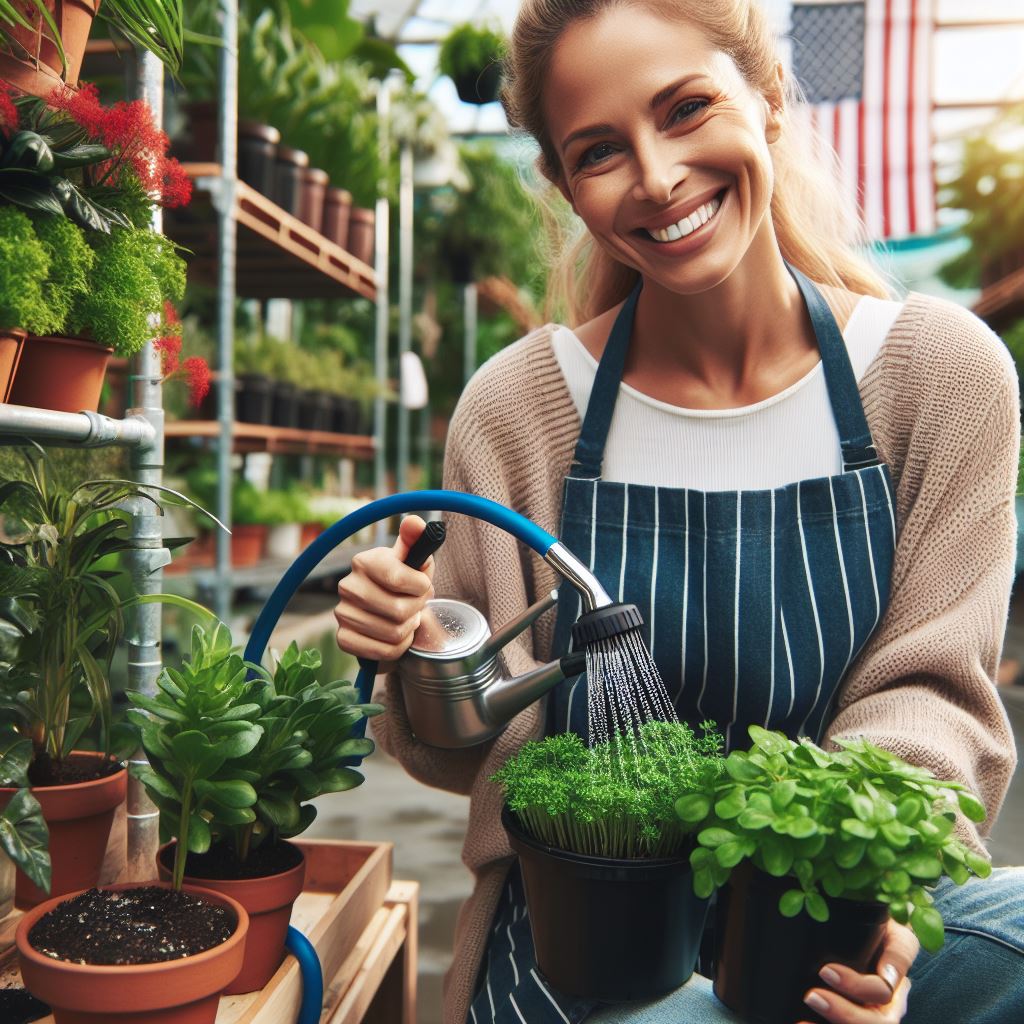
Mulching and Moisture Conservation
The role of mulching in conserving moisture
Mulching is an essential technique in container gardening as it helps retain moisture in the soil.
By creating a protective layer on top of the soil, mulch prevents water evaporation.
Mulching also helps to suppress weed growth, reducing competition for moisture in the container.
It acts as an insulator, regulating soil temperature and preventing water loss due to evaporation.
Different types of mulch suitable for container gardening
Organic mulch, such as straw, wood chips, and grass clippings, are excellent choices for container gardening.
They provide additional nutrients to the soil as they break down and enhance soil structure.
Inorganic mulch options include pebbles, rocks, and plastic mulch, offering long-term moisture retention.
Choose mulch based on your plants’ specific needs and aesthetic preferences.
How to apply mulch effectively to retain moisture
- Prepare the container: Ensure the soil is moist before applying mulch. Water the container thoroughly but avoid oversaturation, as it may lead to root rot.
- Choose the right mulch: Select a suitable mulch type based on your plants’ water requirements and your preferences.
- Apply mulch layer: Spread a layer of mulch, approximately 2-3 inches thick, evenly on the soil surface. Avoid piling it against the plant stems to prevent rot and disease.
- Leave space around the stems: Create a donut-shaped ridge around the base of the plant, leaving a gap between the mulch and stems to prevent stem rot.
- Replenish mulch when necessary: As the mulch decomposes, replenish it to maintain a consistent layer. This will ensure continued moisture retention and weed control.
- Water efficiently: Mulch helps to conserve moisture, but regular watering is still necessary. Limited irrigation is more effective with mulch, as it reduces evaporation and promotes deep root growth.
- Adjust moisture levels: Monitor the moisture content of the soil by occasionally checking its depth with your fingers. Adjust watering frequency and duration to maintain optimal moisture levels.
Overall, mulching is a valuable technique in container gardening, as it conserves moisture, reduces weed growth, insulates soil, and improves overall plant health.
By following these steps, you can effectively apply mulch and maximize the benefits of water-smart container gardening.
Read: Water-Wise Gardening: Simple Steps for Hobbyists
Incorporating Water-Smart Plants
Drought-tolerant plant options for containers
- Succulents – These plants have thick leaves that store water, making them perfect for dry conditions.
- Lavender – Known for its stunning purple flowers, lavender is not only beautiful but also drought-tolerant.
- Rosemary – With its aromatic leaves, rosemary is a hardy herb that thrives in hot and dry climates.
- Agave – This plant is a desert native and can survive with very little water, making it an excellent choice.
- Yucca – Yucca plants are drought-tolerant and add a unique touch to any container garden.
Selecting plants with low water requirements
- Geraniums – These vibrant flowers are not only colorful but also require minimal watering.
- Cosmos – These annual flowers can withstand hot and dry conditions, making them a water-smart choice.
- Calendula – With its bright orange or yellow flowers, calendula can thrive with little water.
- Marigolds – These cheerful flowers are low-maintenance and can withstand dry spells.
- Zinnias – Zinnias come in various colors and require minimal watering, making them perfect for containers.
Combining plant varieties with similar water needs in containers
- Grouping succulents – Create a stunning succulent container garden by combining different types with similar water requirements.
- Pairing lavender and rosemary – These two plants not only have similar water needs but also offer a lovely fragrance.
- Combining geraniums and marigolds – These plants thrive in drier conditions and make for a beautiful container display.
- Mixing cosmos and zinnias – Both of these flowers can tolerate drought, providing a vibrant and water-smart combination.
- Creating a drought-tolerant herb garden – Combine rosemary, thyme, and sage in a container, ensuring they receive the same watering.
By incorporating these water-smart plants, you can create a thriving container garden that conserves water.
Remember to choose plants that are well-suited for your climate and the amount of sunlight your containers receive.
Do not be afraid to experiment and mix different plant varieties to create unique and stunning combinations.
Additionally, it is essential to provide appropriate drainage in your containers to prevent waterlogging and root rot.
Watering your container plants deeply but less frequently helps establish healthier root systems and encourages water efficiency.
Consider using mulch to help retain moisture in the soil, reducing the need for frequent watering.
Regularly monitor the moisture levels in your containers and adjust your watering schedule accordingly.
Lastly, remember that water conservation is not just environmentally responsible but can also save you time and money in the long run.
In a nutshell, incorporating water-smart plants, selecting low-water requirement plants, and combining plant varieties with similar water needs are all effective techniques for container gardening with water efficiency in mind.
See Related Content: Soil Health for Water Conservation in Gardens
Managing Runoff and Proper Drainage
Preventing water runoff and wastage
- Use a saucer or tray under your containers to catch excess water and prevent runoff.
- Avoid overwatering your plants as it can lead to water wastage and increase the risk of runoff.
- Mulch the soil surface to help retain moisture, reducing the need for excessive watering.
- Water in the early morning or late evening when the weather is cooler to minimize evaporation and runoff.
- Install a rain barrel or collect rainwater to use for watering your container plants, reducing the need for tap water.
Importance of proper container drainage
- Proper container drainage is crucial to prevent waterlogged soil, which can lead to root rot and plant death.
- Excess water in the container can also dilute essential nutrients, affecting plant growth and health.
- Poor drainage can increase the risk of overwatering and runoff, wasting water and harming the environment.
- Adequate drainage ensures that plants receive the right amount of water, promoting healthy root development.
Techniques to improve drainage in containers
- Choose containers with drainage holes at the bottom to allow excess water to escape.
- Place a layer of small rocks or pebbles at the bottom of the container to create a drainage layer.
- Use a well-draining soil mix that contains perlite or vermiculite to enhance drainage.
- Avoid compacting the soil in the container, as it can hinder water movement and drainage.
- Elevate the containers slightly using bricks or blocks to allow excess water to flow out.
- Consider using self-watering containers with built-in drainage systems to regulate water flow.
- Monitor the moisture levels regularly and adjust watering frequency accordingly to prevent waterlogging.
- Prune the plants to remove any dead or overcrowded growth, promoting better air circulation and drainage.
- Use a soil moisture meter or your finger to check soil moisture before watering, ensuring it is dry several inches below the surface.
- If excess water does accumulate in the saucer or tray, remove it promptly to prevent the roots from sitting in water.
By implementing these water-smart techniques, you can effectively manage runoff and improve drainage in your container garden.
This will not only conserve water but also promote healthier plant growth.
Remember to regularly inspect your containers and make any necessary adjustments to maintain optimal drainage.
With careful attention to watering and proper drainage, your container plants will thrive while minimizing water wastage.
Monitoring and Adjusting Watering Schedule
Importance of monitoring soil moisture levels
- Regularly checking soil moisture ensures plants receive the right amount of water.
- Monitoring prevents overwatering, which can lead to root rot and plant diseases.
- Underwatering is also avoided, preventing plants from drying out and wilting.
Using moisture meters or fingertip tests to assess water needs
- Moisture meters provide accurate readings, indicating when plants require watering.
- Fingertip tests involve inserting a finger into the soil to check moisture levels.
- If the soil feels dry a few inches below the surface, watering is necessary.
Adjusting watering schedules based on plant needs and environmental factors
- Understand each plant’s water requirements to determine proper watering frequency.
- Plants in hot and dry climates may need more frequent watering than those in cooler regions.
- Adjust watering schedules during rainy periods to prevent overwatering and waterlogging.
- Smaller containers generally require more frequent watering than larger ones.
- Monitor weather conditions to account for increased evaporation rates and adjust watering accordingly.
- Pay attention to signs of plant stress, such as wilting leaves or overly dry soil.
- Consider using automatic irrigation systems with timers for consistent watering.
Using moisture meters or fingertip tests to assess water needs
By regularly monitoring soil moisture levels, gardeners can ensure their container plants are receiving adequate water.
Overwatering and underwatering can be detrimental to plant health, causing diseases and wilting, respectively.
By using moisture meters or performing fingertip tests, it is easy to assess the water needs of plants.
Moisture meters provide precise readings, while the fingertip test involves checking the soil’s dryness.
If the soil feels dry a few inches below the surface, it’s a sign that watering is necessary.
Adjusting watering schedules based on plant needs and environmental factors
Adjusting watering schedules is critical for meeting the unique requirements of different plants and considering environmental factors.
By understanding each plant’s water needs, gardeners can determine the optimal watering frequency.
Plants located in hot and dry climates usually require more frequent watering compared to those in cooler regions.
Showcase Your Farming Business
Publish your professional farming services profile on our blog for a one-time fee of $200 and reach a dedicated audience of farmers and agribusiness owners.
Publish Your ProfileIt is important to adapt watering schedules during rainy periods to avoid overwatering and waterlogging, which can harm plant roots.
Container size
Container size is another factor to consider.
Smaller containers tend to dry out more quickly, necessitating more frequent watering.
Conversely, larger containers retain moisture for longer periods.
Monitoring weather conditions is essential as higher temperatures and increased evaporation rates may demand increased watering.
It is crucial to observe signs of plant stress, such as wilting leaves or excessively dry soil. These signs indicate the need for immediate watering.
To simplify watering routines, gardeners can opt for automatic irrigation systems with timers.
These systems provide consistent and efficient watering, ensuring plants receive the required moisture.
Gardeners can set up
the timers based on their plants’ specific watering needs, providing a hassle-free watering solution.
Conclusion
Container gardening lets urban dwellers and small space farmers grow plants in pots, planters, and other vessels.
However, container plants are especially prone to drying out.
Utilizing water-wise techniques is crucial for healthy, thriving container gardens that conserve our precious water supplies.
This blog has explored small-scale solutions for irrigating smartly, retaining moisture, harvesting rainwater, recycling graywater, mulching, and selecting low-water crops.
By implementing such methods, container gardeners can grow bountiful edibles and beautiful ornamentals while nurturing sustainability.
Mindfully managing water leads to stronger plants better able to withstand drought, diseases, and pests.
Plus it reduces the burden on municipal systems. With some creative thinking, container gardens can flourish using a fraction of the water.
The concepts covered here enable gardeners to grow gorgeous pots on balconies, patios, rooftops, and beyond that require little supplemental water after establishment.
Applying these principles, we can craft self-sufficient gardens in unlikely places.

